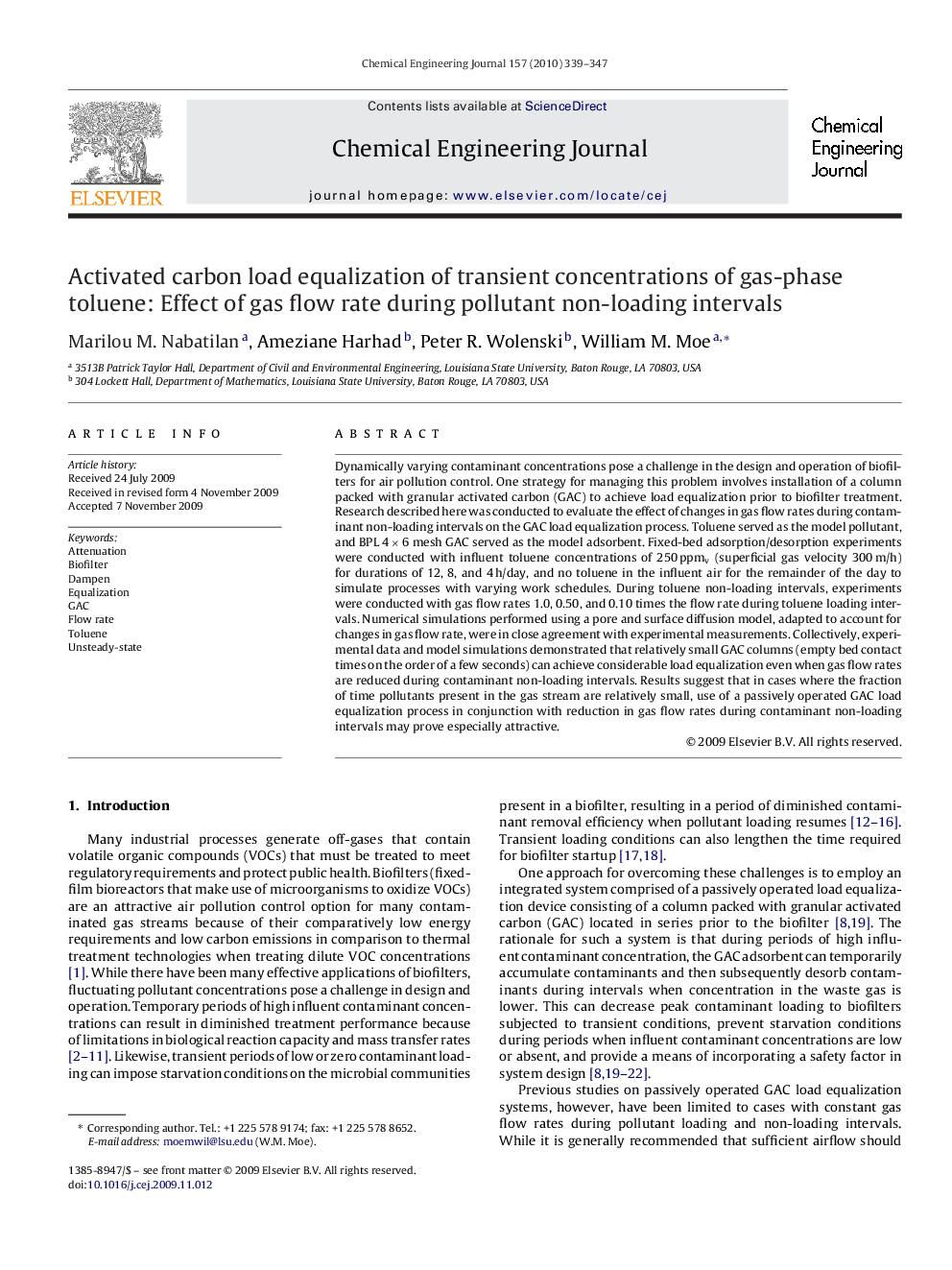| Article ID | Journal | Published Year | Pages | File Type |
|---|---|---|---|---|
| 152846 | Chemical Engineering Journal | 2010 | 9 Pages |
Dynamically varying contaminant concentrations pose a challenge in the design and operation of biofilters for air pollution control. One strategy for managing this problem involves installation of a column packed with granular activated carbon (GAC) to achieve load equalization prior to biofilter treatment. Research described here was conducted to evaluate the effect of changes in gas flow rates during contaminant non-loading intervals on the GAC load equalization process. Toluene served as the model pollutant, and BPL 4 × 6 mesh GAC served as the model adsorbent. Fixed-bed adsorption/desorption experiments were conducted with influent toluene concentrations of 250 ppmv (superficial gas velocity 300 m/h) for durations of 12, 8, and 4 h/day, and no toluene in the influent air for the remainder of the day to simulate processes with varying work schedules. During toluene non-loading intervals, experiments were conducted with gas flow rates 1.0, 0.50, and 0.10 times the flow rate during toluene loading intervals. Numerical simulations performed using a pore and surface diffusion model, adapted to account for changes in gas flow rate, were in close agreement with experimental measurements. Collectively, experimental data and model simulations demonstrated that relatively small GAC columns (empty bed contact times on the order of a few seconds) can achieve considerable load equalization even when gas flow rates are reduced during contaminant non-loading intervals. Results suggest that in cases where the fraction of time pollutants present in the gas stream are relatively small, use of a passively operated GAC load equalization process in conjunction with reduction in gas flow rates during contaminant non-loading intervals may prove especially attractive.
